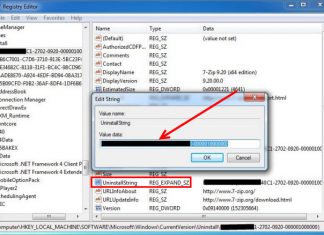Writing a project is a complex thing to do, and in this era of digital information, for someone not familiar with all the things it consists of, it can be even more challenging. For many people, the term project charter doesn’t mean that much, we all may hear of it, but we still don’t know what it is and are aware of its importance, but when the time comes, and we need to write our own project charter, that is when we realize how relevant it actually is. Managers know this very well since it is their job to design, organize, and direct the completing projects for some organization. They are also responsible for making deadlines, staying within the budget and scope, and this document has a significant role in all that. So, let’s first take a closer look at what it actually is.
What is a project charter

It is perhaps one of the most valuable documents, as it initiates the plan and states the exact scope of work needed in order to achieve it. It consists of several essential factors that must be included, such as conditions, timeline, necessary investments (including both available resources and predetermined budget), as well as success factors. Maybe the best way to interpret the meaning of the one is the fact that without one, the project itself formally doesn’t exist. Even more, in order for it to be confirmed, the senior manager within the organization needs to approve it.
Now, when we know what it is, there is still a question about how to write it, what to include, and how to make creating one much easier. Luckily for us, there are many quality templates that can help with that, and if you don’t know where to find one, check more project charter templates, as they can be of great help, especially if you are still new to all this. But, even with templates, there are some tips and tricks that can be of great help when writing one, which is why we will now check out the top five tips for creating your first project charter.
1. Timeline and deadlines
Milestones are important because of all the obvious reasons, and knowing where and when to begin and how it will end will make the task at hand much more manageable. For each phase of the plan, like elaboration, planning, delivery, etc., starting and ending dates can be vital to your whole operation. Another thing one can implement to make the entire process more manageable is the visual diagram that will accurately show how each phase will progress and how you will manage to accomplish it. It is all about the projects’ timeline, and talking about the timeline, remember that it is crucial to enter those deadlines that are non-negotiable, so make sure you noted all of them.
Since we mention deadlines, there is no need to worry if or when it happens that you miss one, and just remember to put that possibility when you create one. It is nothing strange to break some deadlines, and what’s more important is the closing date.
2. Determine tasks and responsibilities

Knowing which task belongs to whom in your team will benefit the overall performance as every person will always be aware of their responsibilities. The chain of responsibility will clearly state who answers and reports to whom, who is responsible for approvals, and who is overseeing the project’s resources. When making a project charter, each role should be supported by a job description, like project manager, team members, etc.
3. Create SMART
It is not only enough to know the objects but also to justify the presence of one. The goals need to be clearly defined and show precisely why there is a project charter in the first place. Because they understand things well, people can focus on the results. The best way to achieve that is to perform SMART – specific, measurable, achievable, relevant, time-bound and to make the objectives in that manner. It is necessary to follow the progress all the time and sometimes to make the adjustments to get the most of it. Try to reach what you aim for and frequently check if you are still on a good path.
4. Budget

Knowing your budget before you start is essential. That way, you will know what the approximate price is, and therefore whether there is the possibility of finish it without problems. Remember that it is necessary to calculate all the costs, such as equipment, labor, and materials, but also salaries and anything else linked to the project. That is the rough estimation, and after that, it is necessary to make a much detailed financial plan. The detailed plan will help you avoid any unpredicted costs and know exactly how much you can spend on a certain task. It can be crucial to follow the budget plan to avoid the inconvenience that a lack of money brings.
5. Evaluate the risks
Knowing the risks can be very helpful in creating the best strategy. The easiest way is to classify them on time in order to know about the odds and possibility of them occurring. Even some small detail can have a huge effect and can determine whether it will be successful or not, and it is crucial to recognize it on time since if it is not identified on time and is not put under control, it can threaten everything you worked on. On the other side, there are also some risks that can actually be useful. They are also called positive risks and can help in reaching and achieving your goals.
The bottom line

Everything mentioned above should help when you start writing your first project charter, even if someone is new to all this. Determining which person is authorized to give approval, setting the proper chain of roles and responsibilities, along with the projected timeline and deadlines, will enormously impact the overall efficiency. All these things are a reason why a well-created project charter is so important.



















